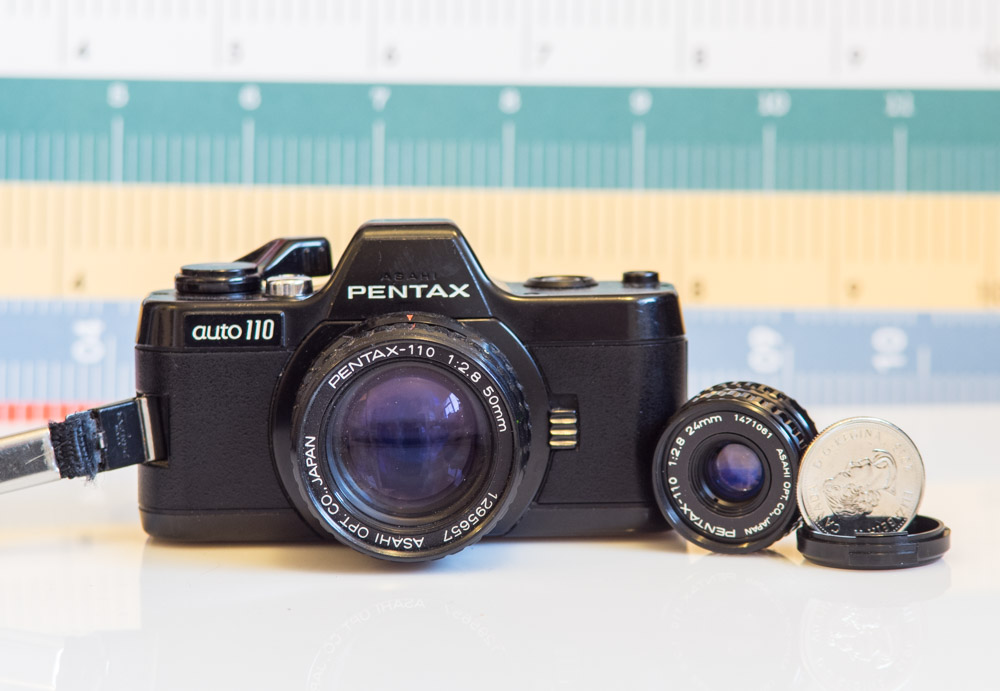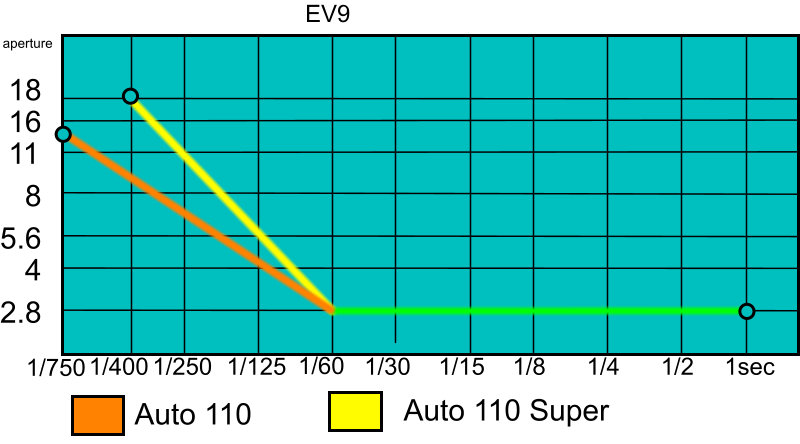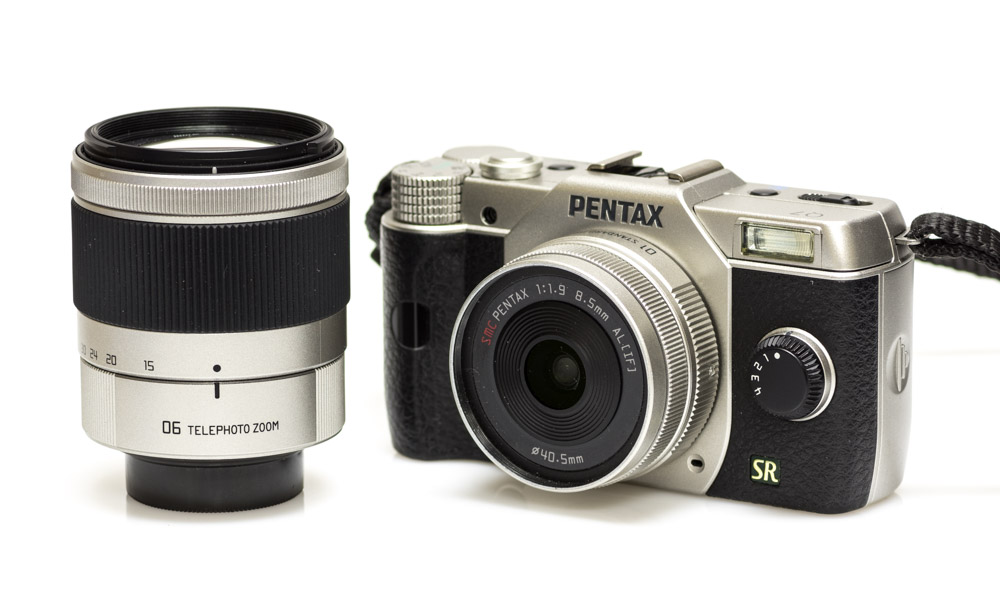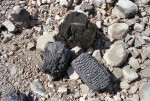May
27
2016

The Pentax Auto 110 is very cute but it’s also a functioning camera. Given its equally cute film size it does a surprisingly good job, but that’s not what it’s all about it’s just fun. What kind of camera is it specifically? It is an SLR with interchangeable lenses that uses 110 size film. That makes it entirely unique in the camera world (The Minolta 110 Zoom SLR has a fixed lens). With the smaller film if you talk about the lens focal length its easiest to equate it to the more familiar 35mm film focal lengths. It’s a straight forward 2x multiplier so the 24mm is equivalent to 48mm and the 50mm is like a 100mm. Because it is an SLR the image you see in the viewfinder is through the lens and there is no issue with parallax. You manually focus as well through the viewfinder using a split image focus screen an experience much like any other SLR it’s just so much smaller. The aperture resides in the body and the lenses have no mechanical linkage so it was necessary for all the lenses to have the same maximum aperture of f2.8. Little touches like this are what made it possible for the engineers to miniaturize an SLR’s functions. Exposure is completely automatic but given the varied situations I shot this roll of film in it works pretty well. Did I mention its fun to use?
Here is a representation of the program line or aperture and shutter speed the camera will select in combination.
 As of 2016 it would seem the most viable option for 110 film is Lomography Tiger color negative film.
As of 2016 it would seem the most viable option for 110 film is Lomography Tiger color negative film.
1 comment | posted in Cameras, Photography
May
20
2016

Sometimes what you need is a little extra width and when it comes to film point and shoot cameras there is nothing like the Pentax 24EW. The Ricoh Gr21 has a wider focal length but does not zoom the Ricoh R1 goes to 24mm but only in its panoramic mode (It can be forcibly made to cover the full frame but at a visible cost in image quality). There is the Vivitar Ultra Wide and Slim but it falls more into the toy camera category. So when it comes time to shoot wide angle with a little versatility this is the camera. Some of the features I’ve gone over previously but are worth mentioning again are: exposure compensation of +-3EV in half stops, spot AF, Macro shooting at 0.3m in wide and 0.5m at telephoto.
The 24-105mm lens is built using 7 elements in 5 groups with apertures of f4.9-12.8 and for that reason it really needs quite a bit of light or fast film to be its most useful.

It’s easily seen even in these small versions of the images that there is a lot of distortion in the corners with the 24EW but at least you are able to record them. In the center of the image it performs as well as most film point and shoot zoom cameras good but never great. I used Kodak 400 film a speed of film that I would recommend as there is no real advantage to using slower film for finer grain this lens just isn’t up to it.
no comments | posted in Cameras, Photography
May
12
2016

Its difficult to talk about a lens for the Q series of cameras without also talking about the cameras. Even though the lenses are interchangeable, more than any other camera system the two are intrinsically linked. What I mean is that you really can’t talk about one without the other. So while the 06 telephoto is equivalent to a 70-210mm lens on a 35mm format camera it really isn’t the same thing.

The sensor on the Q7 is tiny and that has drawbacks and advantages. The drawbacks are around noise and a very large depth of field. Using the 06 addresses those issues somewhat by being relatively fast at f2.8 across its entire zoom range and also with the longer focal lengths it is possible to isolate a subject against the background. The small sensor also allows for the lens to be built incredibly small, in fact it only weighs 90g
 45mm f2.8
45mm f2.8
The lens renders the out of focus areas in a nice smooth way leaving the point of interest to stand out effectively. The ability to focus closely is limited though at 100 cm throughout the zoom range which places limits on how large you can reproduce an item, it is no macro lens. Also on the detrimental side of things the small sensor of the Q is prone to purple fringing and moire, the former can be mitigated in editing but high contrast areas can be challenging and can require a little editing or profiling. Also there is a tiny amount of chromatic aberration that also requires addressing to achieve the best results. This despite the fact that the lens is built with 14 elements in 10 groups.  45mm f3.2
45mm f3.2
Of course you don’t always want a shallow depth of field and for that the Q and its lenses excel. Also stopping down can improve the image quite a bit particularly for distant details.

So once you consider the limitations and if you work within the abilities of the combination you can get pretty good results and when you also consider just how small it all is the 06 zoom is a great little lens worth having for anyone with a Pentax Q series camera.

29.7mm f4
The Pentax Q 06 Telephoto does provide excellent sharpness across the entire frame as seen above, you can click trough to a full resolution version of this file.
One final note this lens as well as the 01 prime and 02 zoom all have a 40.5mm filter size so can share filters and also lens caps. You can just grab any one from your bag as your changing lenses.
3 comments | posted in Cameras, Photography
May
5
2016

There is something very satisfying about seeing a scene projected onto the ground glass of a twin lens reflex camera and the great thing about the Yashica 44 is its so small it easy to pack around. I’ve written previously on how to convert one to use 35mm film Yashica 44 35mm conversion. One tip though use film that lays flat on its own like this Agfa Vista I used this time around, do not use expired Kodak consumer film, Ektar would be fine but anything with a tendency to curl will drive you to distraction when it comes time to scan it. There is also a satisfaction derived from shooting through the sprocket holes and over the films edges with its unique look.
no comments | posted in Cameras, Photography
 As of 2016 it would seem the most viable option for 110 film is Lomography Tiger color negative film.
As of 2016 it would seem the most viable option for 110 film is Lomography Tiger color negative film.















































































